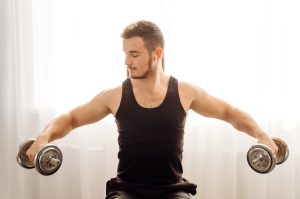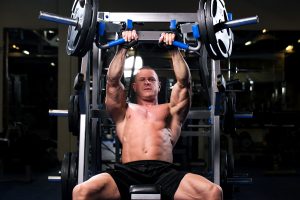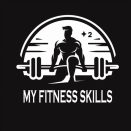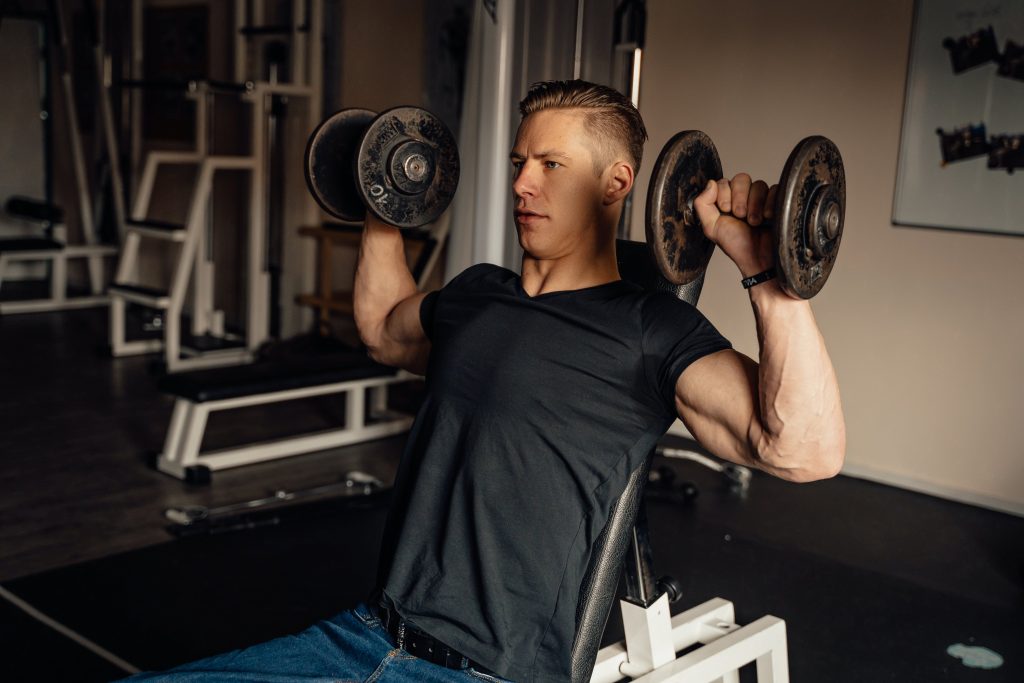INTRODUCTION TO SHOULDER WORKOUT
The shoulders are a complex and vital part of the upper body, offering a wide range of motion that allows for various activities, from lifting objects overhead to throwing a ball. However, this mobility also makes the shoulder susceptible to injuries if not properly strengthened and stabilized. Shoulder workout play a crucial role in enhancing the strength, stability, and overall health of this essential joint complex.
Shoulders are an integral part of our upper body, providing support and mobility. Strengthening and maintaining shoulder health is crucial, especially for those involved in sports or physical activities. In this blog post, we’ll delve deep into shoulder anatomy, the importance of shoulder workout , and provide a comprehensive list of workout to keep your shoulders robust and pain-free. Understanding the shoulder’s anatomy is essential before diving into workout . The shoulder is a ball-and-socket joint, but unlike the hip, the socket (glenoid) is shallow, allowing for a more extensive range of motion but making it susceptible to injuries.
1. Importance of Shoulder Strength:
- Mobility: Strong shoulders facilitate a wide range of movements, including reaching, lifting, and rotating the arms.
- Stability: The shoulder joint is inherently unstable due to its extensive range of motion. Strengthening the surrounding muscles can help provide support and prevent injuries.
- Functional Performance: Activities such as sports, weightlifting, and daily tasks require shoulder strength and stability for optimal performance and reduced injury risk.
2. Key Muscles Targeted:
- Deltoids: Consisting of three parts (anterior, medial, and posterior), the deltoids are responsible for various arm movements, including lifting and rotating.
- Rotator Cuff Muscles: Comprising four muscles (supraspinatus, infraspinatus, teres minor, and subscapularis), the rotator cuff provides stability to the shoulder joint and assists in arm rotation and elevation.
- Trapezius: This large muscle spans the neck, shoulders, and upper back, contributing to shoulder movement and posture.
3. Safety Tips:
- Prioritize proper form and technique to prevent shoulder injuries.
- Incorporate a mix of workout to target all aspects of shoulder development, ensuring balanced muscle growth and reduced injury risk.
Tips for Effective Shoulder Training
- Warm-Up: Always warm up before starting your workout to increase blood flow and reduce injury risk.
- Proper Form: Ensure proper technique to target the intended muscles and prevent injuries.
- Progressive Overload: Gradually increase weights or reps to challenge your muscles and promote growth.
- Rest & Recovery: Allow adequate rest between workouts to repair and strengthen muscles.
- Consult a Professional: If you’re new to shoulder workout or have existing shoulder issues, consult a physiotherapist or fitness expert
TYPES OF SHOULDER WORKOUT

Shoulder workout can be categorized based on the specific muscles targeted, the equipment used, and the range of motion involved. Here’s an overview of some common types of shoulder workout :
- Pressing Movements:
- Overhead Press (Barbell/Dumbbell/Shoulder Press Machine): Targets the deltoids, triceps, and upper chest, promoting overall shoulder strength and development.
- Arnold Press: A variation of the shoulder press that involves a rotating movement, engaging different parts of the deltoids.
- Lateral (Side) Raises:
- Dumbbell Lateral Raises: Targets the medial deltoid, enhancing shoulder width and definition.
- Cable Lateral Raises: Uses a cable machine for resistance, allowing for a constant tension throughout the movement.
- Front Raises:
- Dumbbell Front Raises: Targets the anterior deltoid, aiding in front shoulder development.
- Plate Front Raises: Involves lifting a weight plate in front of the body, focusing on the front deltoids.
- Rear Deltoid Workout:
- Reverse Flyes (Dumbbell/Machine/Cable): Targets the rear deltoids and upper back muscles, improving shoulder stability and posture.
- Face Pulls: Engages the rear deltoids, upper traps, and rotator cuff muscles, promoting shoulder health and posture.
- Rotator Cuff Workout:
- External/Internal Rotations (Dumbbell/Cable): Strengthens the rotator cuff muscles, enhancing shoulder joint stability and reducing injury risk.
- Empty Can Workout: Targets the supraspinatus muscle of the rotator cuff, promoting shoulder health and function.
- Compound Movements:
- Upright Rows: Targets the deltoids, traps, and upper back muscles, promoting shoulder and upper body strength.
- Push Press: Combines a leg drive with an overhead press, engaging multiple muscle groups, including the deltoids and triceps.
- Isolation Workout:
- Shrugs (Dumbbell/Barbell/Machine): Focuses on the trapezius muscles, aiding in neck and shoulder stability.
- Scaption Raises: Involves lifting the arms at a 45-degree angle in front of the body, targeting the deltoids and promoting shoulder health.
- Mobility and Stretching Workout:
- Shoulder Circles: A dynamic stretching workout that promotes shoulder mobility and flexibility.
- Wall Slides: Engages the shoulder muscles while improving shoulder mobility and posture.
- Functional and Sports-Specific Workout:
- workout like throwing, swinging, or swinging can also be considered shoulder workout as they engage the shoulder muscles and promote functional strength and performance in various sports and activities.
Benefit of shoulder Workout
Shoulder workout offer a multitude of benefits that extend beyond just aesthetic improvements. Strengthening and conditioning the shoulders can enhance overall upper body function, reduce the risk of injury, and support various daily and athletic activities. Here are some key benefits of shoulder workout :
1 .Improved Shoulder Strength:
Enhances the ability to lift and carry objects, perform overhead movements, and maintain arm stability during various activities.
2. Enhanced Shoulder Stability:
Helps stabilize the shoulder joint, reducing the risk of injuries such as dislocations or rotator cuff tears, especially during high-intensity or repetitive movements.
3. Increased Range of Motion:
Improves flexibility and mobility in the shoulders, allowing for a wider range of movements without discomfort or pain.
4. Reduced Risk of Injury:
Strengthens the muscles and ligaments surrounding the shoulder joint, providing support and protection against injuries during sports, workouts, or daily activities.
5. Improved Posture:
Strong shoulders contribute to better posture by supporting the spine and promoting an upright position, reducing strain on the neck and back.
6. Enhanced Athletic Performance:
Many sports require strong and stable shoulders for optimal performance in activities such as throwing, swinging, or lifting.
7. Functional Fitness:
Supports daily activities like reaching overhead, lifting objects, or performing tasks that involve arm movements, enhancing overall functional fitness and independence.
8. Balanced Upper Body Development:
Shoulder workout help ensure balanced muscle development in the upper body, preventing muscle imbalances that can lead to postural issues or injuries.
9.Improved Joint Health:
Regular shoulder workout can help maintain joint health by promoting circulation, reducing stiffness, and supporting the lubrication of the shoulder joints.
10. Boosted Metabolism and Fat Loss:
Engaging in shoulder workout , especially compound movements, can stimulate the metabolism and contribute to fat loss, promoting a leaner and more defined physique.
11. Enhanced Well-being:
Physical activity, including shoulder workout , releases endorphins, which are natural mood enhancers. Regular exercise can contribute to improved mental well-being, reduced stress levels, and a more positive outlook on life.
Common Mistakes to Avoid
While shoulder workout are beneficial, several common mistakes can hinder progress and increase injury risk:
- Overloading: Avoid lifting weights that are too heavy, as this can strain the muscles and compromise form. Start with manageable weights and progress gradually.
- Poor Posture: Maintaining proper posture during workout is crucial. Avoid slouching or arching your back, as this can strain the shoulders and lead to injuries.
- Ignoring Pain: If you experience sharp or persistent pain during workout , stop immediately. Ignoring pain can exacerbate injuries and prolong recovery.
- Lack of Variability: Incorporate a variety of workout to target different shoulder muscles and prevent overuse injuries. Mixing up your routine also keeps workouts engaging and challenging.
- Skipping Warm-Up: Skipping the warm-up can increase the risk of muscle strains and injuries. Always allocate time for a proper warm-up to prepare your muscles and joints for the workout ahead.
Incorporating Shoulder Workout into Your Routine
To maximize the benefits of shoulder workout , consider integrating them into a structured workout routine: Frequency: Aim to train your shoulders 2-3 times per week, allowing adequate rest between sessions. Avoid consecutive days of intense shoulder workouts to prevent overtraining.
Balance: Ensure a balanced workout by incorporating workout for all shoulder muscles, including the deltoids, rotator cuff, and trapezius. This promotes overall shoulder development and reduces the risk of imbalances. Progression: As you become more comfortable with the workout , gradually increase the intensity by adding resistance, increasing repetitions, or incorporating advanced variations.
Recovery: Prioritize recovery by incorporating rest days, proper nutrition, and adequate sleep into your routine. Recovery is essential for muscle repair and growth, ensuring you’re ready for subsequent workouts.
Nutrition and Shoulder Health
Nutrition plays a pivotal role in muscle recovery, growth, and overall shoulder health. Consider the following nutritional guidelines:
- Hydration: Stay hydrated to maintain joint lubrication and muscle function. Aim for at least 8-10 glasses of water daily, adjusting based on activity level and climate.
- Omega-3 Fatty Acids: Incorporate foods rich in omega-3 fatty acids, such as salmon, walnuts, and flaxseeds, to reduce inflammation and support joint health.
- Antioxidants: Include fruits and vegetables rich in antioxidants, such as berries, spinach, and bell peppers, to combat oxidative stress and promote tissue repair.
Shoulder workout are a cornerstone of a well-rounded fitness regimen, promoting strength, mobility, and overall shoulder health. By understanding shoulder anatomy, prioritizing proper technique, and integrating a balanced workout routine, you can optimize shoulder development and minimize injury risk. Remember, consistency, patience, and attention to form are key to achieving your shoulder training goals. Listen to your body, prioritize recovery, and consult healthcare or fitness professionals when needed. With dedication and perseverance, you can cultivate strong, healthy shoulders that support you in all your physical endeavors.
Advanced Techniques and Progressions
Once you’ve established a solid foundation with basic shoulder workout , you may consider incorporating advanced techniques to further challenge your muscles and stimulate growth:
- Supersets: Pairing two workout back-to-back with minimal rest increases workout intensity and efficiency. For example, combine shoulder presses with lateral raises for a comprehensive deltoid workout.
- Drop Sets: Start with a heavier weight and perform an exercise to near fatigue. Immediately decrease the weight and continue the set to induce muscle fatigue and promote hypertrophy.
- Isometric Holds: Incorporate isometric holds at various points during workout to intensify muscle engagement and improve strength. For instance, hold the midpoint of a shoulder press for 10-15 seconds before completing the rep.
- Plyometric workout : Integrate plyometric movements, such as medicine ball throws or plyo push-ups, to enhance power and explosiveness in the shoulders.
Injury Prevention and Rehabilitation
Injury prevention and rehabilitation are paramount, especially when engaging in intense shoulder workouts:
- Mobility Work: Prioritize shoulder mobility workout , such as arm circles, wall slides, and shoulder dislocations, to maintain joint flexibility and prevent stiffness.
- Dynamic Warm-Up: Incorporate dynamic stretches and movements specific to shoulder mobility before workouts to prepare the joints and muscles for exercise.
- Cross-Training: Engage in cross-training activities that complement shoulder workouts, such as yoga or swimming, to promote overall joint health and reduce injury risk.
- Listen to Your Body: Pay attention to any signs of discomfort or pain during workouts. Modify workout as needed and consult a healthcare professional if symptoms persist.
Incorporating Functional Movements
Incorporating functional movements into your shoulder workouts can enhance everyday functionality and sports performance:
- Pushing Movements: Emphasize pushing movements, such as push-ups, bench presses, and overhead presses, to develop pressing strength and power.
- Pulling Movements: Integrate pulling movements, including rows, pull-ups, and face pulls, to strengthen the posterior shoulder muscles and improve posture.
- Compound Movements: Incorporate compound movements, such as cleans, snatches, and thrusters, to enhance shoulder stability, coordination, and overall athletic performance.
Conclusion
Shoulder workout are a vital component of a comprehensive fitness regimen, promoting strength, mobility, and functionality. By incorporating advanced techniques, prioritizing injury prevention, and integrating functional movements, you can optimize shoulder development and performance.
Remember to tailor your workouts to your individual goals, fitness level, and any existing medical conditions. Consult healthcare or fitness professionals as needed to ensure safe and effective workout programming.
With dedication, proper technique, and a well-rounded approach, you can cultivate strong, healthy shoulders that support you in all your physical pursuits. Embrace the journey, stay consistent, and enjoy the benefits of a robust shoulder training regimen.
NEXT POST – BACK WORKOUT


Dating is a truly joyful experience. Sometimes we lose sight of this truth in our search for the right Online dating site